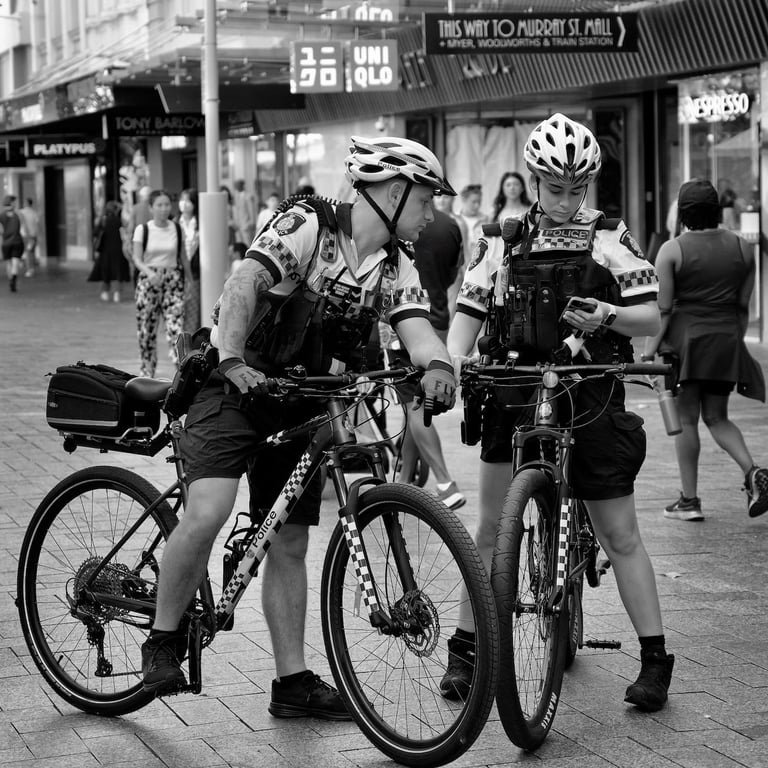Why Chasing Megapixels is a Distraction in Street Photography: Insights by Peter Pickering
Mastering the Art of Street Photography: How Less Megapixels Can Lead to Better Photography
We’ve all been there—yet another camera drops, boasting more megapixels than ever before, and suddenly the buzz is everywhere. It seems like every photographer, hobbyist, and enthusiast alike is caught up in the race to upgrade, chasing the elusive dream of a "better" camera. But let’s take a step back and have a chat about why, particularly in street photography, chasing megapixels might not be the wisest or even the most necessary pursuit. In fact, it might be pulling us away from the heart of what street photography is truly about.
What’s the Big Deal with Megapixels?
Let’s start with the basics: megapixels do have their place, and there’s no denying their importance in certain types of photography. For example, if you’re involved in studio work, glamour shoots, or commercial photography that requires high-resolution images for large prints, more megapixels can be invaluable. The ability to capture every eyelash, every bead of sweat, or the intricate textures of fabric in stunning clarity is critical when you’re producing images for billboards or high-end commercial use. In those cases, more megapixels directly translate into better image quality, providing you with the sharpness and detail needed for massive enlargements. It’s clear why more megapixels are crucial in those contexts.
But when it comes to street photography, a genre known for its rawness, emotion, and authenticity, the megapixel race starts to feel like overkill. Street photography isn’t about pristine perfection; it’s about capturing fleeting moments of life in the city—moments that are often chaotic, imperfect, and unpolished. So, do we really need to be obsessed with having more megapixels? Let’s unpack this further.
The Real Street Scene: Focus on the Moment, Not the Megapixels
Street photography is about telling stories. It’s about documenting the human condition—its unpredictability, beauty, and even its flaws. When you’re roaming the streets with your camera, chasing light and movement, what you’re looking for isn’t pixel perfection. You’re after raw emotion, candid expressions, and the way shadows and light play on the urban landscape. These elements don’t require a massive megapixel count to shine through. Instead, what they demand is a keen eye, impeccable timing, and an intuitive sense of composition.
In fact, having too many megapixels can sometimes work against you. For one, higher resolution images require larger file sizes, which take up more space on your memory cards and hard drives. This might not seem like a huge problem at first, but over time, managing hundreds or thousands of high-resolution images can become cumbersome. More importantly, high megapixel counts can slow down your entire workflow, from shooting to editing. Street photography is fast-paced by nature—there’s no time to fiddle with sluggish file processing when you need to react quickly to the world around you.
What’s more, high-resolution sensors can sometimes pick up too much detail, which can detract from the overall feel of a street photo. Street photography isn’t about hyper-realism; it’s about capturing an atmosphere, a mood. Sometimes, the slight graininess of an image can actually enhance its character and emotion, lending a timeless, nostalgic quality that hyper-detailed images may lack.
Old School Cool: The Legacy of Iconic Street Photography
Think about some of the most iconic street photographs in history—images that have stood the test of time, images that have shaped the genre itself. Photographers like Henri Cartier-Bresson, Robert Frank, and Vivian Maier created their legendary works using cameras that, by today’s standards, would be considered laughably obsolete in terms of technology. These cameras had nowhere near the number of megapixels modern cameras boast, yet the images they produced continue to resonate deeply with audiences.
Why? Because their power lies not in pixel count, but in the moments they captured—moments of raw human emotion, cultural commentary, and the beauty of everyday life. Their photographs have become timeless not because of the resolution, but because of their ability to capture the essence of the human experience. These photographers were storytellers, and their tools were simple. The magic was in their vision, not in the specifications of their gear.
When you look at a compelling street photo, are you zooming in to count the bricks on a building, or are you getting lost in the story, the atmosphere, the light? It’s the latter, isn’t it? Street photography is about connection, not perfection. It’s about evoking feelings, not flaunting technical precision.
Quality Over Quantity: What Really Matters in Street Photography
When it comes to street photography, what matters more than megapixels are factors like composition, timing, light, and perspective. A camera that allows you to be nimble, unobtrusive, and responsive will typically serve you better than one with just a high resolution. Street photographers need to blend into the background, moving fluidly through their environment to capture candid moments without disturbing the scene.
Consider the benefit of using a camera with fewer megapixels: faster performance, quicker burst modes, and the ability to stay inconspicuous. These features allow you to focus on the art of photography itself—framing your shots, waiting for the perfect moment, and reacting to the dynamic energy of the streets. A smaller, simpler camera can help you disappear into the crowd, letting the moment unfold naturally without the distraction of managing oversized files or overly complicated settings.


The Joy of Simplicity: Creativity Through Limitations
There’s something incredibly liberating about working with limitations. When you strip away the bells and whistles of high-tech gear, you’re left with the essentials: your eye, your intuition, and your connection to the moment. Simplicity in your equipment forces you to rely on your own skills, pushing you to focus on composition, lighting, and timing—the very foundations of great photography.
Limitations can often breed creativity. When you’re not relying on technology to do the heavy lifting, you become more attuned to your surroundings. You start noticing things you might have otherwise missed—subtle shifts in light, fleeting expressions, the way shadows dance on a wall. You begin to experiment more with your compositions, pushing boundaries and taking risks that you might not have considered if you were caught up in the technicalities of your camera’s megapixel count.
In a sense, using a simpler camera can bring you closer to the essence of street photography. It strips away the distractions and allows you to focus on what truly matters: capturing life as it happens, in all its spontaneous, unfiltered beauty.
The Myth of Megapixels: Understanding What You Really Need
The truth is, the megapixel race is largely a marketing ploy. Camera manufacturers know that bigger numbers sell, so they continue to push the narrative that more megapixels equate to better photography. But for most street photographers, this simply isn’t the case. The reality is that for web use, social media, and even moderately sized prints, you don’t need 50 or 100 megapixels. In fact, most high-quality street photographs you see online or in exhibitions were shot with cameras that have far fewer megapixels than the latest flagship models.
So, the next time you hear the buzz about the latest and greatest megapixel monster, take a moment to consider what you really need from your photography gear. Are you printing billboard-sized images, or are you sharing your work online and in print at more standard sizes? Chances are, you’ll find that a camera with fewer megapixels is more than sufficient for your needs.
Conclusion: The Decisive Moment, Not the Decisive Megapixel
In street photography, less really can be more. The ability to capture life as it happens is far more important than the number of pixels your camera can produce. Great street photography is about being in the right place at the right time, and having the instinct and skill to capture the moment in a way that resonates with viewers.
As street photographers, our mission is to tell stories—not to chase technical perfection. The best camera is the one that allows us to do that with ease, without bogging us down with unnecessary complexity. So, whether you’re shooting with a modest compact camera or a high-end DSLR, remember that the true magic of street photography lies in the moments we capture, not in the megapixels we count.
Keep shooting, keep exploring, and let’s keep those real moments in focus. After all, it’s not the megapixels that make a great photograph—it’s the heart, the vision, and the story behind it.
Copyright © 2025 Peter Pickering. All Rights Reserved. All Wrongs Reversed.
🌐 peterpickering.com | 🎺 sessionsonthegreen.com | 💜 isaacbcole.com | ▶️ YouTube Channel | 🌿 life.peterpickering.com


